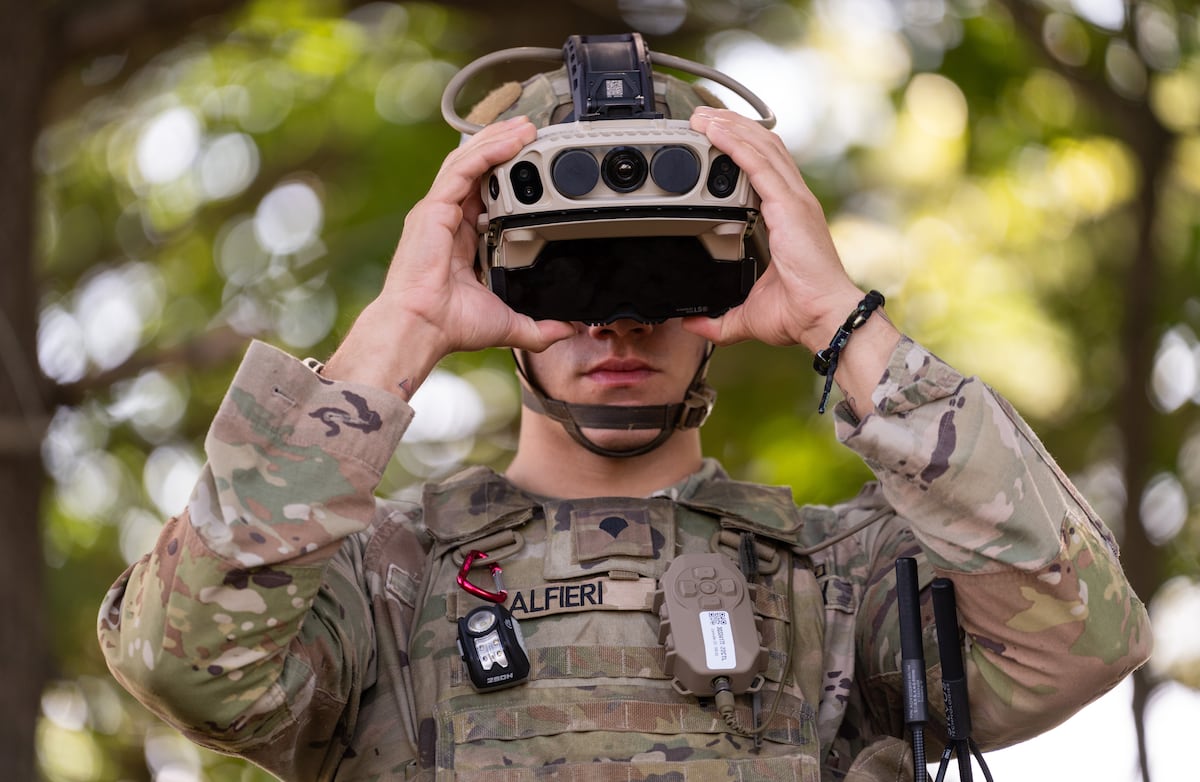The Program Executive Office-Soldier (PEO-Soldier) has introduced a range of innovative equipment for military personnel, significantly enhancing soldier safety and operational efficiency. Key developments include lighter body armor, advanced medical devices, and improved cold weather gear, all of which are set to be fielded in 2025 and beyond.
Advanced Technology Enhancements
Among the notable advancements is the Integrated Visual Augmentation System, now called the Soldier Borne Mission Command. This high-tech heads-up display device is transitioning from a goggle format to a more streamlined glasses version. In September, Rivet secured a $195 million contract for this project, which aims to provide the Army with a modern situational awareness platform for dismounted units operating at the company level and below.
Additionally, Anduril has been awarded a $159 million contract for prototyping a system that integrates night vision and mixed reality capabilities. Both companies plan to deliver 70 systems each by March for evaluation. The final architecture and hardware integration is expected by the fourth quarter of fiscal 2027, according to Lt. Col. Mark May.
Innovative Munitions and Protective Gear
PEO-Soldier is also advancing loitering munition systems, such as the Purpose Built Attritable Systems, which includes various quadcopters. This system can function as a one-way attack drone or deliver munitions. Lt. Col. Will Taylor emphasized that this system is not a traditional drone; it is designed for specific munitions use.
On the heavier side, the Switchblade 600 is a loitering munition capable of carrying a Javelin warhead, enabling it to effectively engage armored targets. Weighing 75 pounds and measuring approximately five feet in length, the Switchblade 600 is already operational, with 138 units deployed across 12 Army units and an additional 1,600 on order.
In terms of soldier protection, the new Lightweight Small Arms Protective Inserts (LSAPI) provide ballistic protection comparable to the Enhanced Small Arms Protective Inserts (ESAPI), but at a reduced weight of 1.5 pounds. The Army has initiated production of 72,179 LSAPI plates through a $65.5 million contract with Hardwire LLC and Leading Technology Composites, Inc.
Furthermore, new helmet pads have been approved to enhance comfort and fit, with modifications allowing for better attachment of tactical communications and hearing protection equipment.
Cold Weather Gear and Medical Innovations
For operations in cold environments, the Army is testing tactical clothing, snowshoes, and skis, with plans to fully equip a unit by fiscal 2028, as mentioned by Lt. Col. Austin Banford. Soldiers from the 3rd Brigade, 25th Infantry Division, and the 3rd Brigade, 82nd Airborne Division, are also evaluating a poncho designed to shield against electromagnetic detection.
In the realm of medical care, PEO-Soldier has introduced the Sparrow ventilator, which automates respiration for injured soldiers, allowing medics to focus on other critical tasks. The introduction of blood coolers and freezers enables medics to create ice packs for blood delivery in field conditions. Additionally, a blast overpressure monitoring system is under development to track soldiers’ exposure to blast events throughout their service.
Overall, these advancements reflect a commitment to enhancing soldier safety and operational effectiveness through innovative technology and equipment. As the U.S. Army prepares for future challenges, these developments will play a crucial role in ensuring that troops are well-equipped and ready for a variety of missions.
